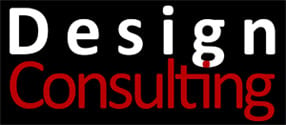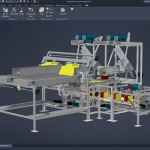Autodesk Revit: Fundamentals for MEP Training
Autodesk Revit: Fundamentals for MEP Training
MEP fundamentals for Autodesk Revit teaches designers how to model and document in a BIM environment HVAC networks such as air terminals, mechanical equipment, ducts and pipes, plumbing networks with fixtures and pipes, electrical circuits, equipment, devices, lighting fixtures, cable trays and conduits and then how to create construction drawings and schedules.
Course Length: 4 Days
Training Guide Contents
Chapter 1: Introduction to BIM and Autodesk Revit
- 1 BIM and Autodesk Revit
- 2 Overview of the Interface
- 3 Starting Projects
- 4 Viewing Commands
Chapter 2: Basic Sketching and Modify Tools
- 1 Using General Sketching Tools ▪ 2.2 Inserting Components
- 3 Selecting and Editing Elements
- 4 Working with Basic Modify Tools
- 5 Working with Additional Modify Tools
Chapter 3: Starting Systems Projects
- 1 Linking and Importing CAD Files
- 2 Linking in Revit Models
- 3 Setting Up Levels
- 4 Copying and Monitoring Elements
- 5 Coordinating Linked Models
- 6 Batch Copying Fixtures
Chapter 4: Working with Views
- 1 Modifying the View Display
- 2 Duplicating Views
- 3 Adding Callout Views
- 4 Creating Elevations and Sections
Chapter 5: Setting Up Spaces
- 1 Preparing a Model for Spaces
- 2 Adding Spaces
- 3 Working with Spaces
Chapter 6: Heating and Cooling Loads Analysis
- 1 Creating Zones
- 2 Applying Colour Schemes
- 3 Analysing the Heating and Cooling Loads
Chapter 7: Basic Systems Tools
- 1 Connecting Components
- 2 Creating Systems – Overview
Chapter 8: HVAC Networks
- 1 Adding Mechanical Equipment and Air Terminals
- 2 Adding Ducts and Pipes
- 3 Modifying Ducts and Pipes
Chapter 9: Plumbing Networks
- 1 Adding Plumbing Fixtures and Equipment
- 2 Adding Plumbing Pipes
- 3 Modifying Plumbing Pipes
- 4 Adding Fire Protection Networks
Chapter 10: Advanced Systems for HVAC and Plumbing
- 1 Creating and Modifying Systems
- 2 Creating Automatic Layouts
- 3 Testing Systems
Chapter 11: Electrical Systems
- 1 About Electrical Systems
- 2 Placing Electrical Components
- 3 Creating Electrical Circuits
- 4 Setting up Panel Schedules
- 5 Adding Cable Trays and Conduit
- 6 Testing Electrical Layouts
Chapter 12: Creating Construction Documents
- 1 Setting Up Sheets
- 2 Placing and Modifying Views on Sheets ▪ 12.3 Printing Sheets
Chapter 13: Annotating Construction Documents
- 1 Working with Dimensions
- 2 Working With Text
- 3 Adding Detail Lines and Symbols
- 4 Creating Legends
Chapter 14: Adding Tags and Schedules
- 1 Adding Tags
- 2 Working with Schedules
Chapter 15: Creating Details
- 1 Setting Up Detail Views
- 2 Adding Detail Components
- 3 Annotating Details
Appendix A: Introduction to Worksets
- 1 Introduction to Worksets
Appendix B: Additional Tools
- 1 Building Type Settings
- 2 Defining Colour Schemes
- 3 Custom Duct and Piping Types
- 4 Work with System Graphics
- 5 Pressure Loss Reports
- 6 Guide Grids and Sheets
- 7 Revision Tracking
- 8 Annotating Dependent Views
- 9 Importing and Exporting Schedules
- 10 Creating Building Component Schedules
- 11 Keynoting and Keynote Legends
Appendix C: Autodesk Revit Certified Professional Exam for Mechanical Building Systems
Appendix D: Autodesk Revit Certified Professional Exam for Electrical Building Systems
Contact Us
If you would to discuss Autodesk training courses, please contact us by calling on 1800 490 514, by filling out the form or clicking the live chat in the bottom right-hand corner.


